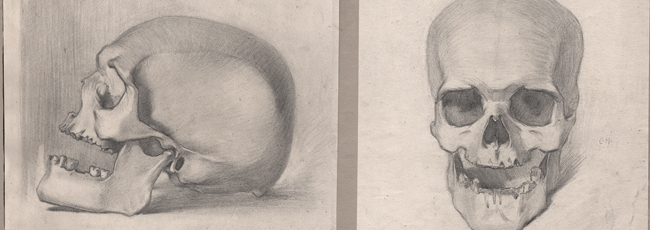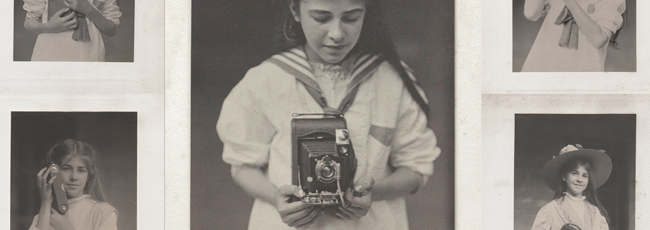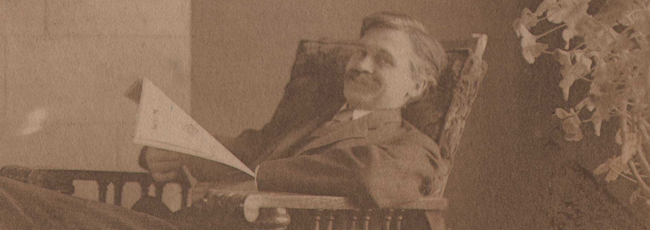Recently, I posted three vintage, gelatin-silver photographs taken by Anne Brigman, (1869-1950) one of the very few west-coast members of the American Photo-Secession. Not less than 24 hours later I was contacted by James Rhem, an independent scholar in the History of Photography and the published author of monographs on Ralph Eugene Meatyard and Aaron Siskind.

San Francisco resident Jan Law (1908-1994) was the subject of these photographs taken by west-coast Photo-Secession member Anne Brigman beginning around 1921. The two photographs on either side of the bottom row are of Law taken later-sometime in the mid-1920’s. For the most part, the portrait style seen in this grouping represents another side of Brigman’s life: that of the commercial photographer. (all photographs courtesy family of Jan Law-now privately owned)
James informed me he had been researching and writing a book about Brigman for some time. Like any scholar worth his salt, he was inquiring about further insight from my photographs. He wrote:
The mystery of the child model had interested me naturally as has the mystery of the male model (though I think I have solved that). My research has built up quite a web of names of friends and connections for Brigman and I wonder if I knew that name of the descendent (or his/her ancestor) if I could then make the connection?
Before James had contacted me, I had done some basic genealogical research for the subject in these photographs and had become intrigued when stumbling upon an image by Brigman titled “The Fawn“. This photograph, sold at auction in 2001, carried the same date, 1921, as two of the photographs in my collection. I wondered, could the young model in my photographs be the same subject depicted in “The Fawn“?
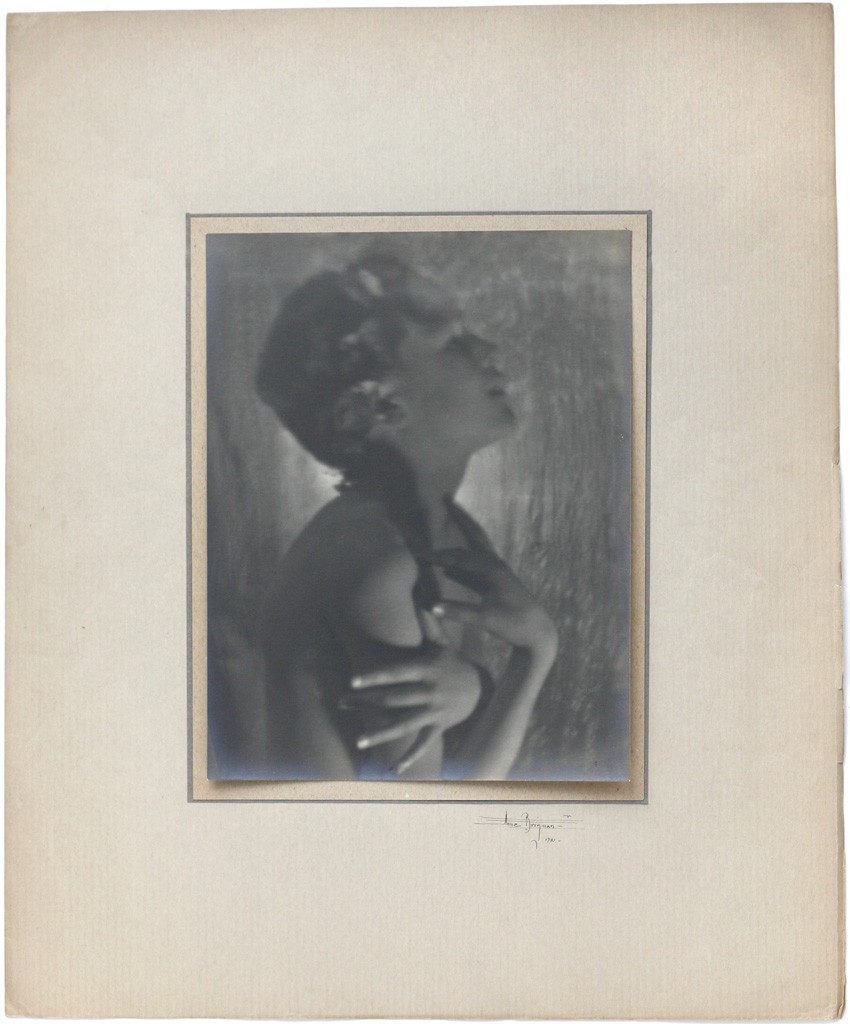
“Extasy—The Little Faun”, taken in 1921, is the title given by Anne Brigman of this ethereal portrait of Jan Law. (1908-1994) The artistic study is an intriguing example of commissioned portraiture by Anne Brigman, who was living in Oakland, CA when it was taken. Image: 25.0 x 19.3 cm | rough-surface, double-weight gelatin silver photograph glued along upper margin to primary support: 45.9 x 38.1 cm | 26.9 x 21.1 cm (outer double mount) from: PhotoSeed Archive
As a collector, I typically seek out provenance details on material I purchase for this archive, and in this case I was ready: I already had a name of the young boy featured in the three photographs I had purchased from his distant family member. But now, with this inquiry from James, I was spurred to do more in order to hopefully expand Brigman scholarship in general. The former owner of the three works, who will remain anonymous, had told me:
We think the person in the photos is my husband’s grandfather Jan Law. My husband says he thinks the photos were probably taken in the San Francisco area.
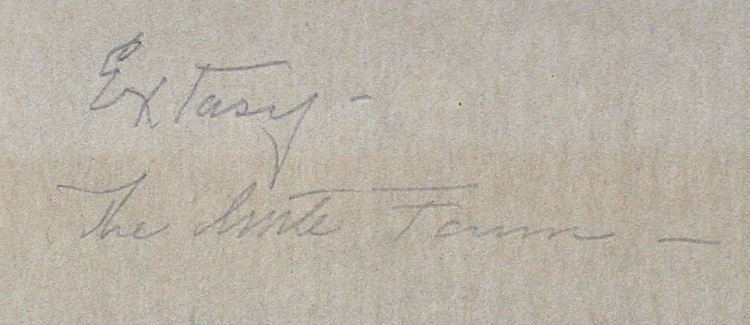
The support verso of “Extasy—The Little Faun” (1921) is titled in graphite and believed to be by the hand of Anne Brigman. (1869-1950) The possibility exists of course that some might perceive “Faun” spelled as “Fawn”. We have chosen to stick with the “Faun” of Roman mythology however since it is more consistent with Brigman’s intent.
Connecting dots and/or figuring out what dots to follow in the first place in collaboration with others like James are all important goals for PhotoSeed in determining photography’s lost and hidden history. In a back and forth via email, James commented further on the child model’s identity in my 3 photographs after I speculated a bit further and asked if he might be the same model depicted in “The Wondrous Globe“, a photograph appearing in Camera Work 38, published in 1912:
I don’t believe there are other images in the three issues of Camera Work in which AB has work that feature this model, but he is used in other images that I have never seen printed. Some interesting negatives I’ve examined at Eastman House have him in them with wings actually etched into the negative!

Photographed by Anne Brigman in 1908, “The Wondrous Globe” (detail shown) appeared as a hand-pulled Japanese tissue photogravure in the Alfred Stieglitz journal Camera Work 38 in 1912. Although the subject of the photograph remains unknown, the model is depicted faun-like, sporting goat horns seen here and appearing in the same High Sierra mountain location as different versions on the George Eastman House online archive. Playing a flute, the boy is alternately titled “Piping Pan” (76:0058:0029) and for “Puck & The Bee”, (76:0060:0016) he is shown with wings etched onto his back. It would almost seem the ever-changing nature of Mythology itself played the central role of Brigman re-casting this model in different ways. Detail: image: 12.1 x 19.9 cm | support: 12.5 x 20.3 cm | from: PhotoSeed Archive
The images I recall were made up in the mountains which raised the question for me about who this might be . . a child of the guide? Someone who lived in the area? Family friend? I’m not sure you’d notice these in the online view. They had not come to my notice until I was actually there going through negatives.
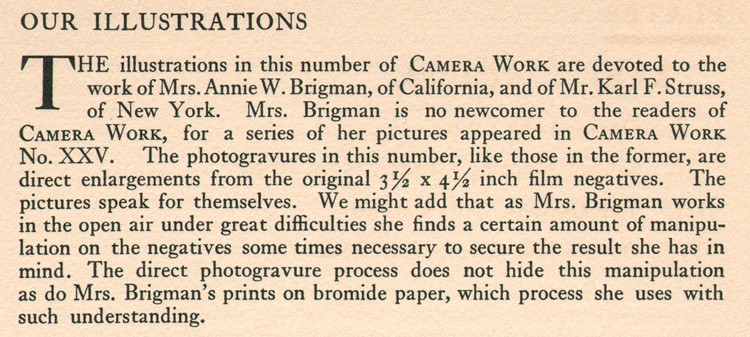
Along with photographer Karl Struss, whose work was also featured in Camera Work 38, editor Alfred Stieglitz commented on some of the working and technical aspects of Anne (then known as Annie) Brigman’s work, which he reproduced in the issue as five hand-pulled Japanese tissue photogravures.
Another query to my California contact while this was all going on with James set the record straight for me, however. This person helpfully confirmed the dates for Jan Law I was able to find online from multiples sources of the U.S. Census. Eleven years old in 1920, Jan Law was born on January 25, 1908 (originally his name was listed as John in the 1910 Census and living in Seattle, WA) and living in San Francisco along with his mother Cora (Wilcox) Law, who is listed as a widow. The 1910 census also listed Jan as having an older brother named George (born around 1905). Law died on January 27, 1994 in Orange, California.

Left: “The Faun”, by Anne Brigman from 1913 (private collection) Right: “The Fawn” as seen in online Christie’s auction sale #9324 (2001). Faun or Fawn, this photograph was later copyrighted by Brigman in 1921, and carried the following auction house description: Gelatin silver print. 1921. Signed, dated and copyright insignia in ink on the recto. 9¾ x 7 5/8in. (24.7 x 19.3cm.)
Now, with the confirmed dates for Law and some additional research, I can say confidently he was not the subject of “The Fawn“, otherwise titled “The Faun“, according to the George Eastman House online archive. This is because the Eastman version, a variant full-frame example of this image, carries the date of 1913 as well as their full-frame copy negative of it titled: “The Faun First Edition (Not So Good) 1913“. (It comes from the series title: “Book 2, Anne Brigman“) Explaining the previous 1921 date now seemed easy enough. For some reason, perhaps to use in a future publishing project, Brigman chose to copyright this particular image eight years after she had taken it. The only Law family connection in my mind with “The Faun” would be if Jan Law’s older brother George had been used as the subject. In this case he would have been around eight years old when it was taken, but he appears much older in this photograph, in my estimation. My research also brings into play the possibility a young man photographed in 1915 by Brigman, which can be seen in the online collection of the Oakland Museum in California, could have been the subject of “The Faun“. Or not. Maybe you might know. I’ll conclude this post by letting James Rhem have the final word on this, with his cautionary insight and expertise, in my mind the principals guiding future Brigman legacy scholarship:
Yes, it is unlikely we shall ever know with certainty the names of these male sitters. She did call upon her sister Elizabeth’s husband for a couple of photographs, but the male children remain a bit of a mystery. Your investigation of the Law images helps create more plausible speculation about the identity. By that I mean the images I have written to you about that place the child in mountain settings far from Oakland are most likely of children who went along on these camping trips rather than locals. These trips (which I have replicated with a photographer friend in the last several years) went to remote locations in the Sierras, but they often involved groups of woman friends and sisters. So, if one were able to establish more about the degree of friendship with Mrs. Law for example it would strengthen the speculation.
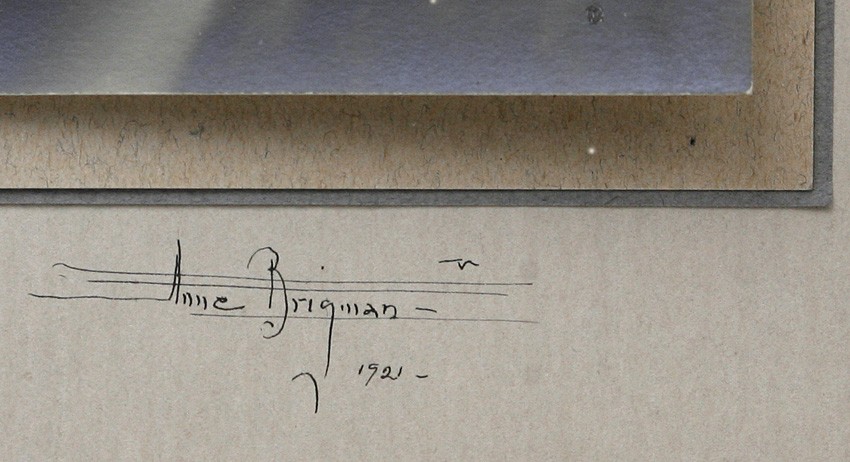
A detail showing an Anne Brigman signature, embellished here with a seagull in flight, appears on the main support below the right corner of the double-mount for “Extasy—The Little Faun”, a study of San Francisco resident Jan Law (1908-1994) taken in 1921.
…What is (to me) interesting about all of this (since establishing the identity of the boy in her art photographs is only a matter of curiosity, not important interest) is that it establishes the fact Brigman did lots of commission work. Because her life is often seized upon as an example of noble, unfettered feminist freedom, you will sometimes find it written as fact that she never did commercial — i.e. for money — work. This is absolutely not true and I have known it for years. The only thing that’s troubling about this is what a narrow and ideologically skewed idea of biography and feminist freedom it reflects. Brigman was a very free figure and very free in her enjoyment of and expression of feminine energies, but she also had a practical side and had to make a living. Also, I think in many of the examples I have seen she certainly did not feel that her portrait work was entirely divorced from her artistic work, again, especially in her photographic portraits of women.
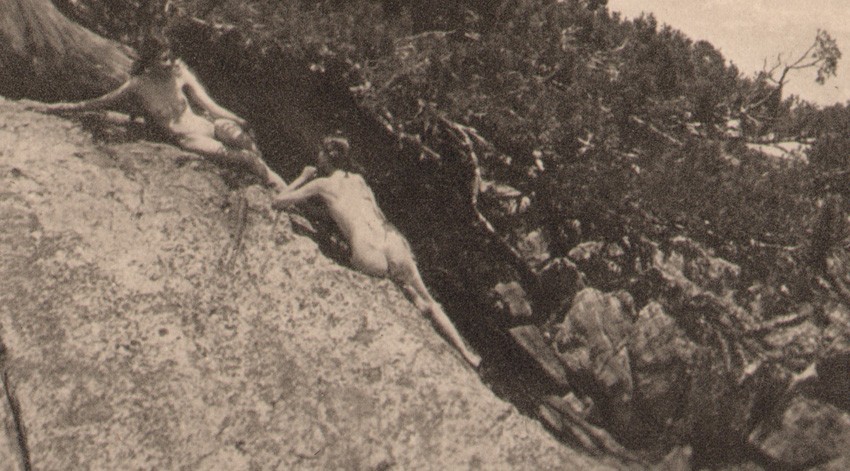
In the female nude study titled “Dryads”, taken by Anne Brigman in the High Sierras in 1907 and shown here in a detail from the hand-pulled, Japanese tissue photogravure published in Camera Work 44 (1913), the act of holding a pose in the great out-of-doors yielded beautiful results. For the long posing stretches however, it was surely not easy on the models, which included herself. Detail: image: 15.9 x 20.4 cm | support: 20.1 x 24.1 cm: from: PhotoSeed Archive
